
How to Use Fan DC 12V: Examples, Pinouts, and Specs
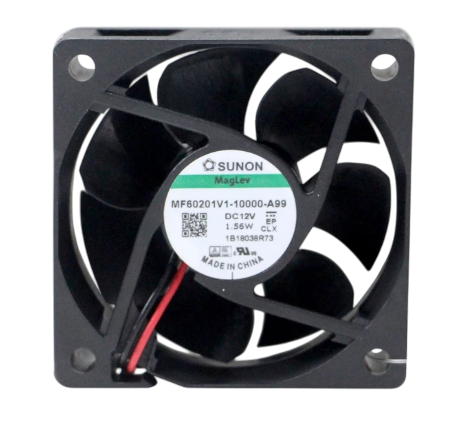
 Design with Fan DC 12V in Cirkit Designer
Design with Fan DC 12V in Cirkit DesignerIntroduction
The Fan DC 12V is a direct current cooling fan designed to operate at 12 volts. It is widely used for cooling and ventilation in electronic devices, enclosures, and systems where heat dissipation is critical. This fan is compact, efficient, and reliable, making it an essential component in applications such as computer systems, power supplies, 3D printers, and other electronic equipment.
Explore Projects Built with Fan DC 12V
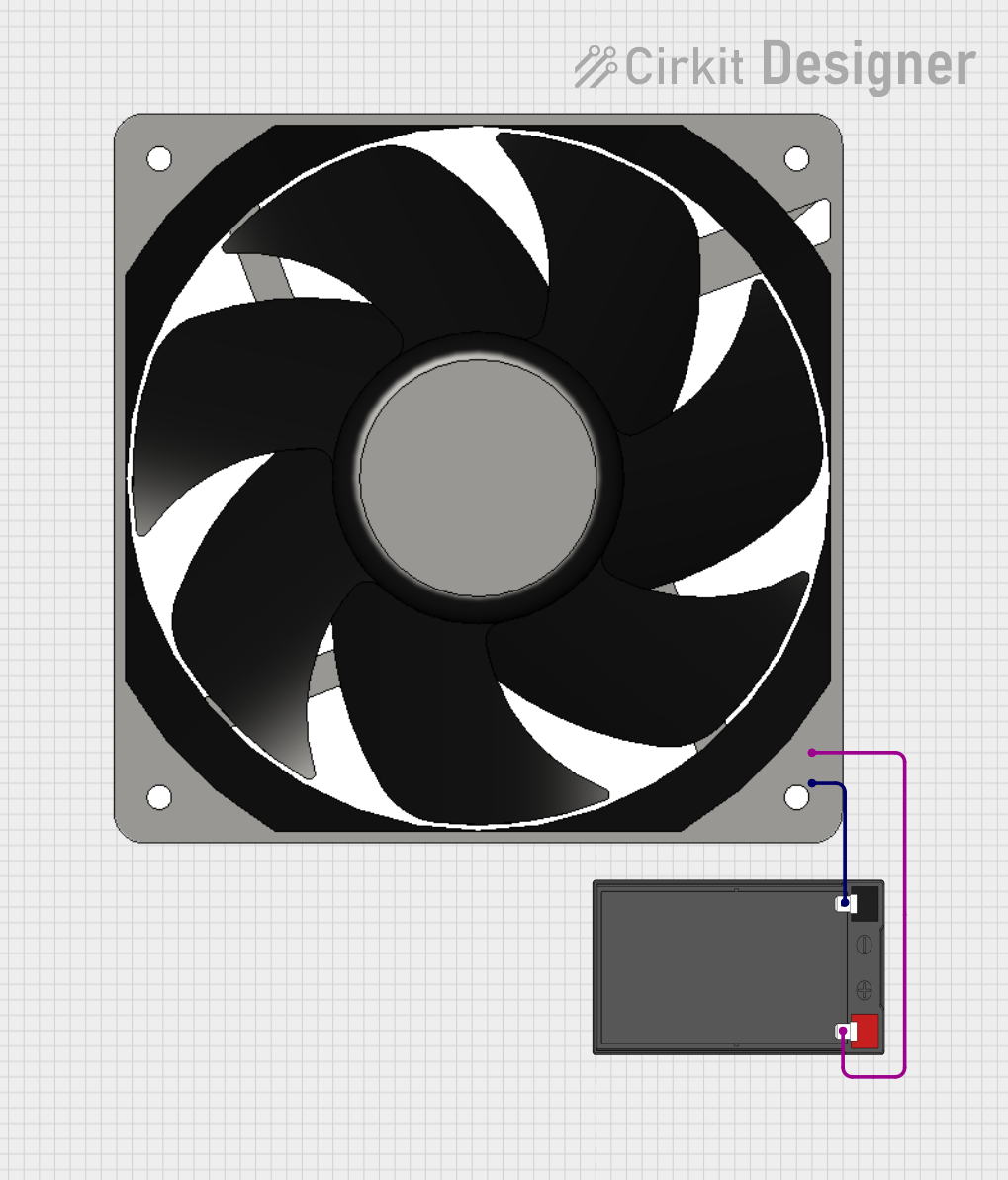
 Open Project in Cirkit Designer
Open Project in Cirkit Designer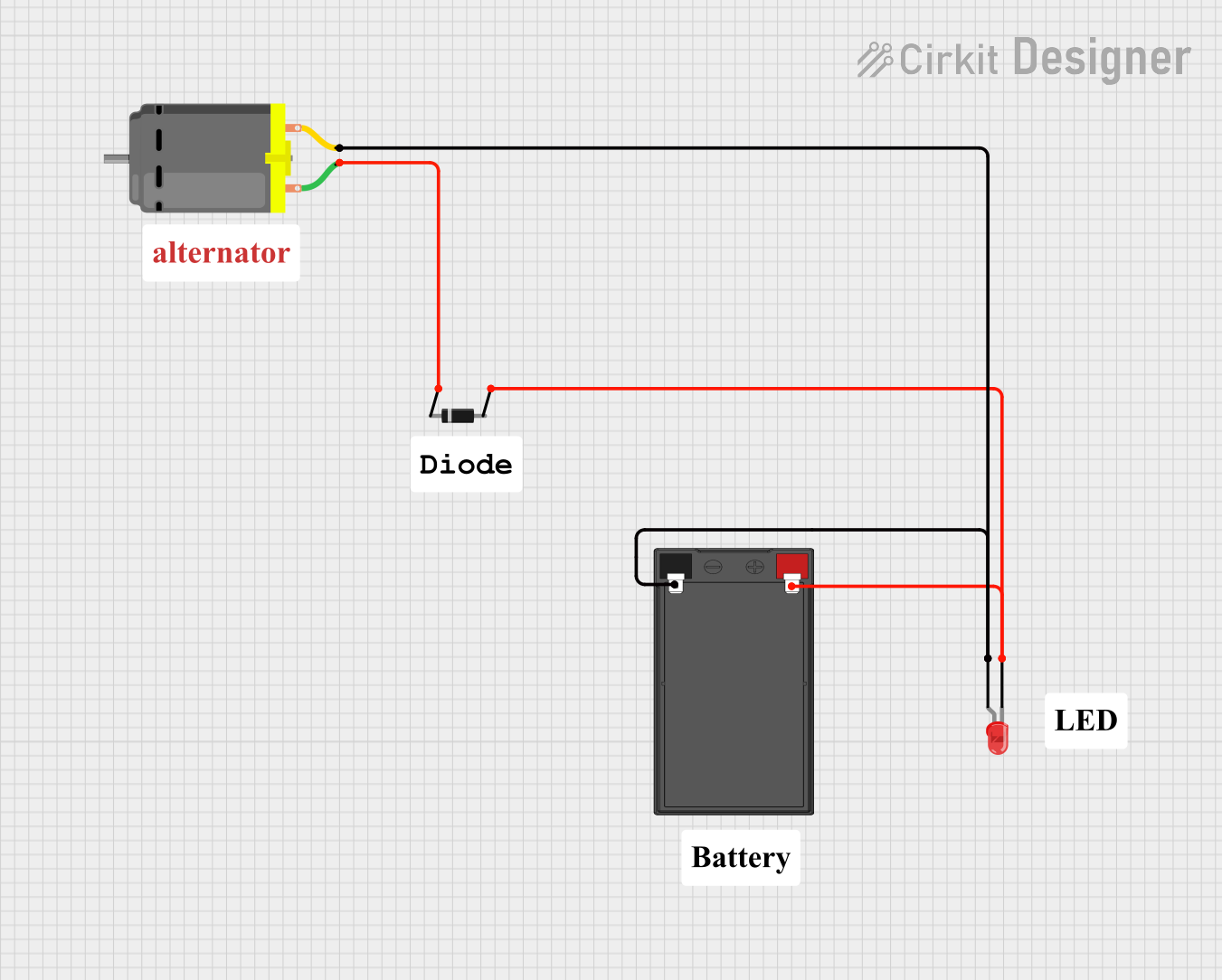
 Open Project in Cirkit Designer
Open Project in Cirkit Designer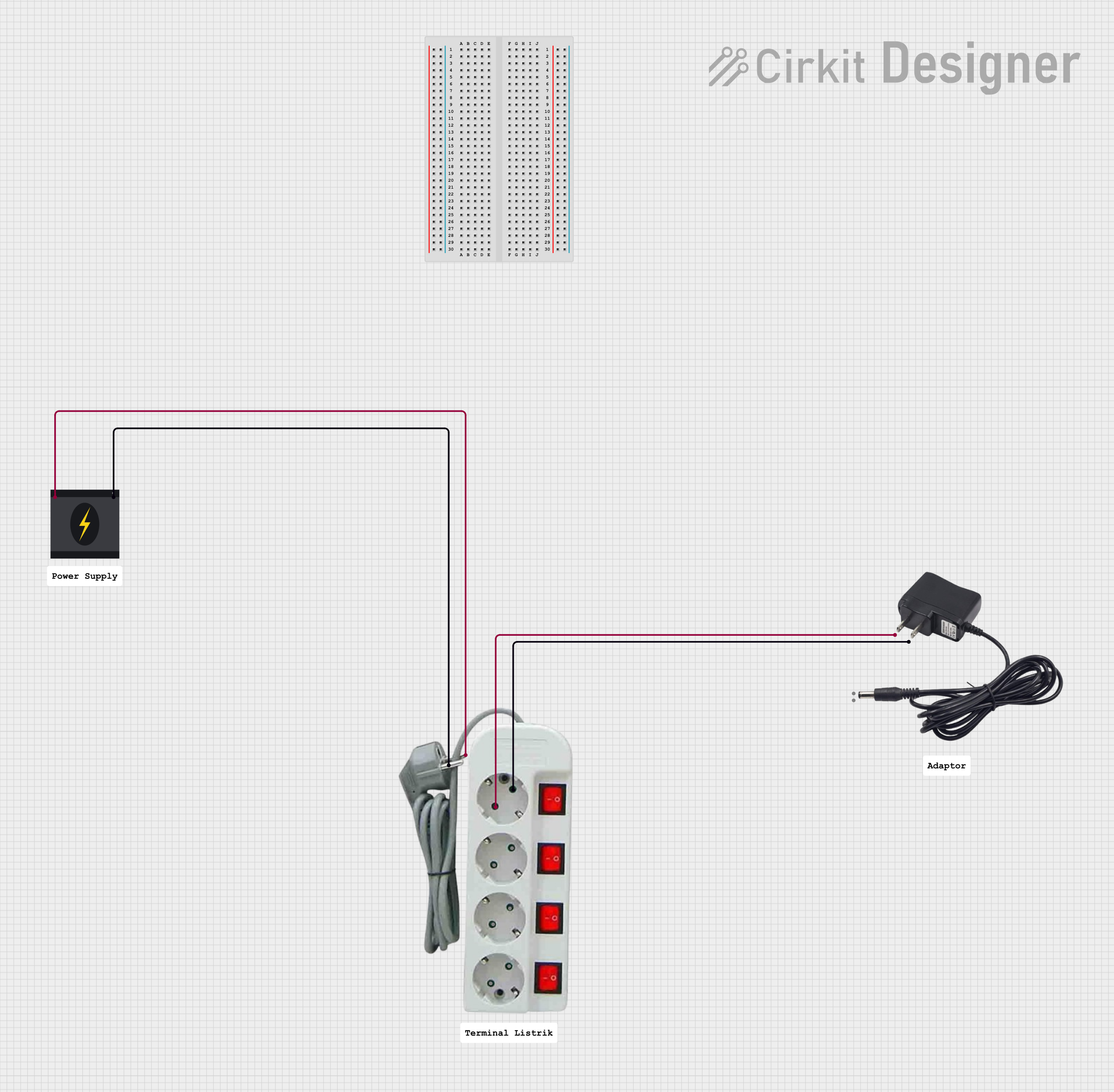
 Open Project in Cirkit Designer
Open Project in Cirkit Designer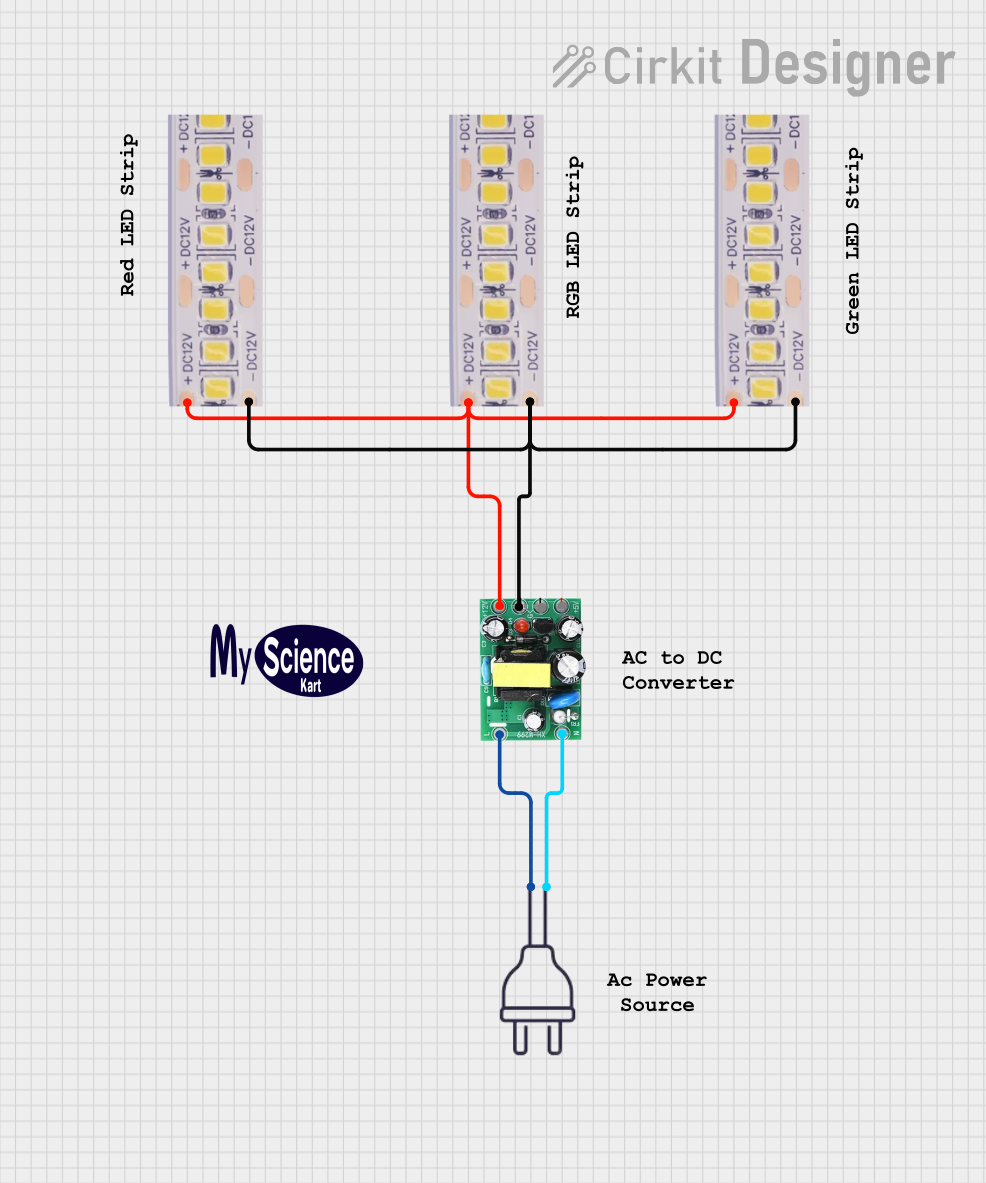
 Open Project in Cirkit Designer
Open Project in Cirkit DesignerExplore Projects Built with Fan DC 12V

 Open Project in Cirkit Designer
Open Project in Cirkit Designer
 Open Project in Cirkit Designer
Open Project in Cirkit Designer
 Open Project in Cirkit Designer
Open Project in Cirkit Designer
 Open Project in Cirkit Designer
Open Project in Cirkit DesignerCommon Applications and Use Cases
- Cooling computer processors, graphics cards, and power supplies
- Ventilation in electronic enclosures and cabinets
- Heat dissipation in 3D printers and other industrial equipment
- General-purpose cooling in DIY electronics projects
Technical Specifications
Below are the key technical details of the Fan DC 12V:
| Parameter | Value |
|---|---|
| Operating Voltage | 12V DC |
| Current Consumption | Typically 0.1A to 0.3A |
| Power Consumption | 1.2W to 3.6W |
| Speed | 2000 to 5000 RPM (varies by model) |
| Airflow | 20 to 50 CFM (Cubic Feet per Minute) |
| Noise Level | 20 to 40 dBA |
| Dimensions | Common sizes: 40mm, 60mm, 80mm, 120mm |
| Bearing Type | Sleeve or Ball Bearing |
| Connector Type | 2-pin or 3-pin |
| Lifespan | 30,000 to 50,000 hours |
Pin Configuration and Descriptions
The Fan DC 12V typically comes with a 2-pin or 3-pin connector. Below is the pin configuration:
2-Pin Connector
| Pin | Wire Color | Description |
|---|---|---|
| 1 | Red | Positive (+12V) |
| 2 | Black | Ground (GND) |
3-Pin Connector
| Pin | Wire Color | Description |
|---|---|---|
| 1 | Red | Positive (+12V) |
| 2 | Black | Ground (GND) |
| 3 | Yellow | Tachometer (Speed Signal) |
Usage Instructions
How to Use the Fan DC 12V in a Circuit
- Power Supply: Connect the red wire to a 12V DC power source and the black wire to ground. Ensure the power supply can provide sufficient current for the fan's operation.
- Mounting: Secure the fan in the desired location using screws or adhesive mounts. Ensure proper airflow direction by checking the fan's markings or airflow arrows.
- Speed Control (Optional): For 3-pin fans, you can monitor the speed using the tachometer signal. For speed control, use a PWM (Pulse Width Modulation) controller or a variable resistor.
Important Considerations and Best Practices
- Voltage Compatibility: Ensure the power supply provides exactly 12V DC. Overvoltage can damage the fan, while undervoltage may reduce performance.
- Airflow Direction: Verify the airflow direction to ensure proper cooling. Most fans have arrows indicating airflow and blade rotation.
- Noise Reduction: Use rubber mounts or grommets to minimize vibration and noise.
- Heat Management: Avoid obstructing the fan's intake or exhaust to maintain optimal airflow.
- Wiring: Secure the wires to prevent accidental disconnection or damage.
Example: Connecting to an Arduino UNO
You can use the Fan DC 12V with an Arduino UNO for automated control. Below is an example of controlling the fan using a transistor and PWM.
Circuit Setup
- Connect the fan's red wire to the collector of an NPN transistor (e.g., 2N2222).
- Connect the fan's black wire to ground.
- Connect the emitter of the transistor to ground.
- Connect a 1kΩ resistor between the Arduino's PWM pin (e.g., pin 9) and the transistor's base.
- Connect the Arduino's ground to the power supply ground.
Arduino Code
// Fan control using PWM on Arduino UNO
const int fanPin = 9; // PWM pin connected to the transistor's base
void setup() {
pinMode(fanPin, OUTPUT); // Set the fan pin as an output
}
void loop() {
analogWrite(fanPin, 128); // Set fan speed to 50% (128 out of 255)
delay(5000); // Run at 50% speed for 5 seconds
analogWrite(fanPin, 255); // Set fan speed to 100% (255 out of 255)
delay(5000); // Run at full speed for 5 seconds
}
Troubleshooting and FAQs
Common Issues and Solutions
Fan Not Spinning
- Cause: Insufficient power supply or incorrect wiring.
- Solution: Verify the power supply voltage is 12V DC and check the wiring connections.
Excessive Noise
- Cause: Vibration or worn-out bearings.
- Solution: Use rubber mounts to reduce vibration or replace the fan if the bearings are damaged.
Low Airflow
- Cause: Obstructed intake or exhaust.
- Solution: Clear any obstructions and ensure proper airflow direction.
Fan Stops Intermittently
- Cause: Overheating or power supply issues.
- Solution: Check for overheating and ensure the power supply can handle the fan's current requirements.
FAQs
Q: Can I use a 9V power supply for the Fan DC 12V?
A: No, using a 9V power supply will reduce the fan's performance and may cause it to stall.
Q: How do I control the fan speed?
A: Use a PWM controller or an Arduino to adjust the fan speed by varying the duty cycle of the PWM signal.
Q: What is the difference between a 2-pin and a 3-pin fan?
A: A 2-pin fan only supports power and ground connections, while a 3-pin fan includes a tachometer signal for speed monitoring.
Q: Can I connect the fan directly to an Arduino?
A: No, the Arduino cannot supply enough current for the fan. Use a transistor or a relay to control the fan.